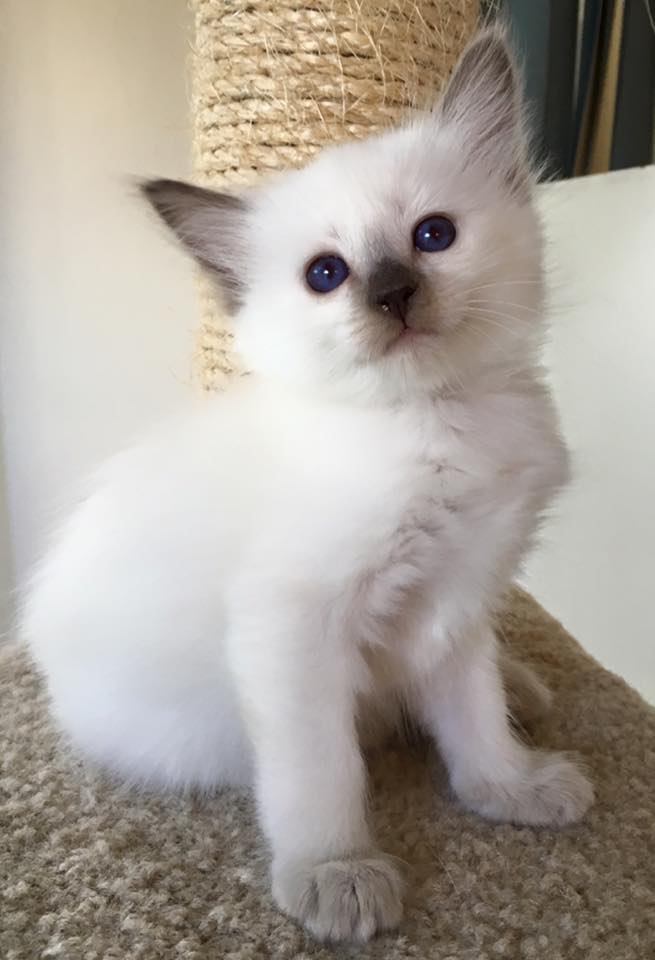Welcoming a Balinese kitten into your home is more than an aesthetic choice, it’s a commitment to nurturing one of the most emotionally intelligent and communicative feline breeds. Known for their vocal nature and deep attachment to their humans, Balinese kittens develop rapidly, both physically and socially, and understanding their milestones can transform your role from caretaker to trusted companion.
During the first eight weeks, sensory development takes center stage. Eyes open around day ten, but true visual acuity emerges closer to week four. Hearing sharpens in tandem, and by week six, Balinese kittens begin responding to voices and environmental cues with remarkable attentiveness. Unlike many breeds, they exhibit early signs of social bonding, often seeking eye contact and vocalizing in response to human interaction. This period is critical for imprinting gentle handling, varied textures, and exposure to household sounds lay the foundation for a confident, well-adjusted adult cat.
Between eight and twelve weeks, motor coordination and play behavior intensify. Balinese kittens display a unique blend of agility and grace, often mastering vertical leaps and complex maneuvers earlier than expected. Their lean musculature and long limbs support this athleticism, but it’s their cognitive engagement that sets them apart. Puzzle toys, interactive feeders, and structured play sessions stimulate neural development and prevent boredom. Owners who integrate daily enrichment during this stage often report stronger emotional bonds and fewer behavioral issues later on.
Socialization continues into the third and fourth months, when Balinese kittens begin to assert their personalities. This breed tends to form deep attachments to one or two individuals, often shadowing them throughout the day. It’s not uncommon for a Balinese kitten to vocalize when left alone, a trait rooted in their Siamese ancestry. Addressing this early with positive reinforcement and gradual independence training helps prevent separation anxiety. Providing safe spaces, such as elevated perches or cozy hideaways, allows the kitten to self-regulate while still feeling connected to the household.
By six months, hormonal changes begin to influence behavior. Spaying or neutering at this stage not only prevents unwanted litters but also stabilizes mood and reduces territorial tendencies. Balinese cats are generally less prone to aggression, but intact males may exhibit roaming behavior or vocal intensity. Early intervention ensures a smoother transition into adulthood without compromising the kitten’s affectionate nature.
Nutrition plays a pivotal role throughout these milestones. High quality kitten food rich in protein, taurine, and DHA supports brain development, muscle growth, and immune resilience. Balinese kittens, with their fast metabolisms and active lifestyles, benefit from multiple small meals rather than large portions. Hydration is equally important; offering both wet and dry food options encourages balanced intake and supports urinary health.
Veterinary checkups should align with developmental phases. Initial vaccinations, deworming, and microchipping are typically completed by twelve weeks, but ongoing assessments help track growth, dental health, and behavioral progress. Balinese kittens often reach full physical maturity around twelve to fifteen months, though emotional maturity may take longer. Owners who maintain consistent routines, provide mental stimulation, and respect the kitten’s evolving boundaries tend to raise cats that are not only beautiful but deeply bonded and emotionally secure.
Raising a Balinese kitten is a journey of mutual discovery. Their milestones aren’t just markers of growth, they’re opportunities to build trust, foster intelligence, and celebrate the unique companionship this breed offers. For those willing to engage with intention and empathy, the rewards are profound and enduring.
Other Cats:

